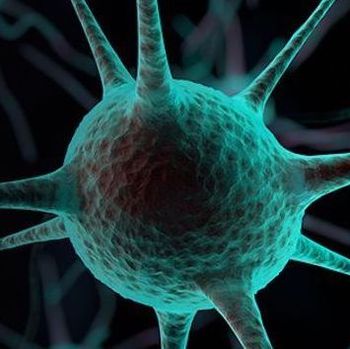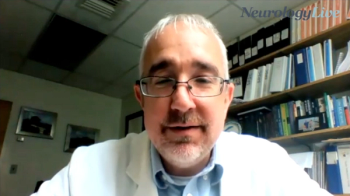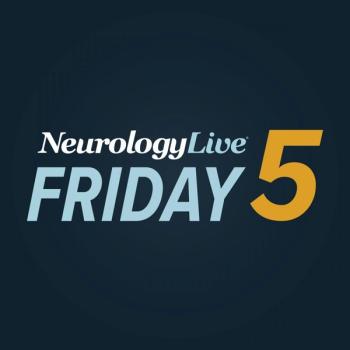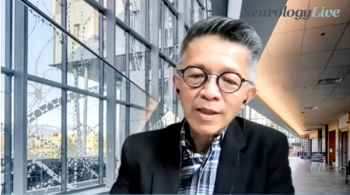
The development of agents for MS to address the treatment needs of patients with progressive and relapsing disease has been an ongoing effort that has brought forth a few new potential disease-modifying therapies.

The development of agents for MS to address the treatment needs of patients with progressive and relapsing disease has been an ongoing effort that has brought forth a few new potential disease-modifying therapies.

The associate professor of neurology at Mayo Clinic Rochester discusses the importance of alternative diagnoses and rarer presentations of MS, in order to avoid misdiagnoses and inappropriate treatment for patients.

The study data suggest that intervention strategies to improve antimicrobial and burdensome intervention for suspected LRIs and UTIs are ineffective.

The chief medical officer of Scholar Rock discussed the greatest areas of concern for patients with SMA and why most of these issues exist in the diagnostic stage.

Instead of a smooth-contoured, thin, and regular ring or arc typically seen, pattern 3 patients had atypical rings such as irregularly thick rings and arcs.

Raman Malhotra, MD, associate professor of neurology, Washington University in St. Louis, and president, AASM, discussed the initiative to increase awareness of healthy sleep.

Challenges surrounding the use of telehealth for patients with Alzheimer disease are affected by technological barriers, according to the associate director of the Montefiore Hudson Valley Center of Excellence for Alzheimer’s Disease

The effect observed in on ALSFRS-R at week 48 and progression-free survival further support the premise of greater treatment effect when masitinib is initiated earlier in the disease.

The collaborative newly published statement stressed the need to address gaps in care that may lead to high risk of stroke recurrence.

The director of the Montefiore Hudson Valley Center of Excellence for Alzheimer’s Disease discusses the use of telehealth for patients with Alzheimer disease during the COVID-19 pandemic, as well as her thoughts on why it is here to stay.

Jessica Zwerling, MD, associate director, Center for the Aging Brain, Montefiore Medical Center, discussed the impact that telemedicine has had in Alzheimer and dementia care.

Following the development and publication of consensus guidelines for the use of MRI in MS, Scott D. Newsome, DO, discusses next steps in adopting and implementing protocols to improve patient care.

Orelabrutinib has the potential to inhibit B cell and myeloid cell effector functions in the central nervous system and may provide a clinically meaningful benefit on progression in all forms of MS.

The neurologist from Cleveland Clinic discussed the importance of studying real-world outcomes in patients with migraine using CGRPs such as eptinezumab.

Use of prescription preventive medication was reported by less than 10% of participants throughout 3 years of follow-up after the completion of the CHAMP trial.

Neurology News Network for the week ending July 17, 2021.

Take 5 minutes to catch up on NeurologyLive's highlights from the week ending July 15, 2021.

In discussion regarding the new MRI consensus guidelines for patients with MS, Scott D. Newsome, DO, and David Li, MD, FRCPC, discuss key points for their peers and colleagues.

Investigators found that certain underrepresented communities were less likely to be eligible for Alzheimer disease trials after the first screening visit.

These study results highlight the interest in immunosuppressive therapy taken before or during pregnancy and to reduce the risk of relapse during pregnancy and 1 year postpartum.

"Mind Moments," a podcast from NeurologyLive, brings you an exclusive interview with Raman Malhotra, MD.

Chaired by Brian G. Weinshenker, MD, the presentations also feature Mayo Clinic experts W. Oliver Tobin, MBBCh, BAO, PhD; Jessica Stulc, MD, MPH; and Orhun H. Kantarci, MD. [WATCH TIME: 1 hour, 30 minutes]

Implementing new recommendations for the use of MRI in patients with MS will be a challenge in terms of education and adherence; Scott D. Newsome, DO, and David Li, MD, FRCPC, discuss the next steps to increase awareness for both patients and providers.

The position statement considers the diagnosis of dementia, problems in decision making, symptoms and behavioral management, and the relationship between dementia care and society.

Scott D. Newsome, DO, and David Li, MD, FRCPC, discuss the impact of new MRI consensus guidelines for patients with multiple sclerosis.

The observational study, initiated by Centogene in partnership with Alector, aims to identify and explore the frequency of genetic mutations in patients with frontotemporal dementia.

Just as sleep is a necessity each night, it is of further benefit when patients are recovering from injury in the hospital and rehabilitation settings.

A significant proportion of survivors from ICH required substantial continuing care sector resources, namely complex continuing care, long-term care, rehabilitation services, and home care.

Since vaccine administration, the CDC has announced 100 preliminary cases of Guillain-Barré syndrome.